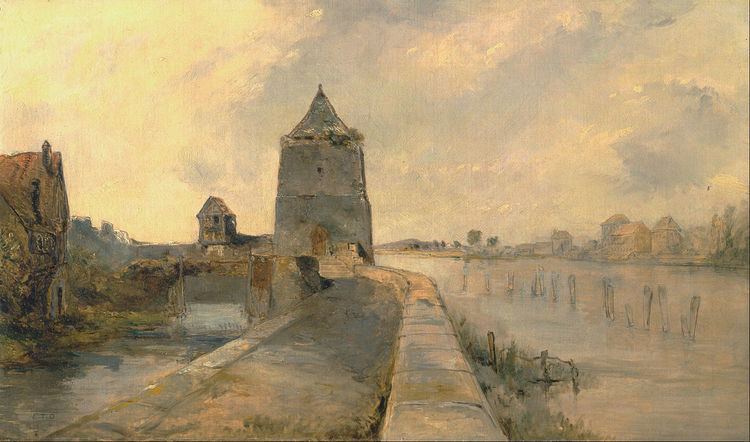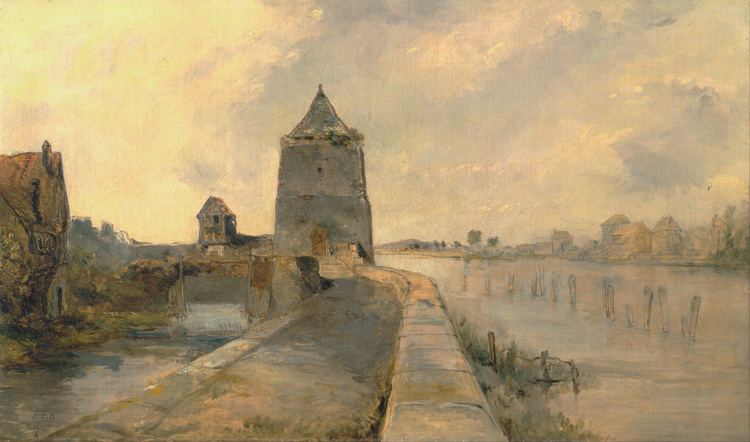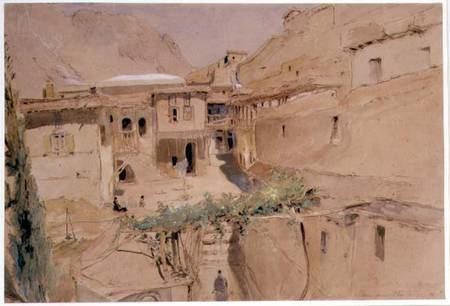Name Edward Daniell | ||
 | ||
Artwork A View of St Malo, Clump of Trees at Quidenham | ||
Edward Thomas Daniell (5 June 1804 – 24 September 1842) was an English landscape painter and etcher. He grew up in Norfolk and was ordained as a priest. He is best known for his drawings made on an expedition to Lycia, in the course of which he died.
Contents

Life

Daniell was born in London of a Norfolk family, and brought up in Norwich. He was taught drawing at the Norwich School by John Crome, whose influence is apparent in his early etchings, but he soon came under the influence of J.M.W. Turner. In 1823, Daniell went up to Balliol College, Oxford. While at Oxford he became a friend of John Linnell, from whom he received some lessons in oil painting. He graduated from Oxford in 1828. The next year he travelled on the continent and etched and painted, returning to England in late 1830.
In 1832 he was ordained, and for a year and a half was curate at the village of Banham in Norfolk. In 1834 he was appointed to the curacy of St. Mark's, North Audley Street in London. His house in Park Lane became a resort of painters that included Linnell, Turner, David Roberts, William Dyce, Thomas Creswick, William Collins, Abraham Cooper, John Callcott Horsley and William Clarkson Stanfield. According to Linnell's biographer, A.T. Story, Daniell's home was "a treasure-house of art, and comprised works by some of the best painters of the day". In 1832 he exhibited a number of his own pictures of scenes in Italy, Switzerland and France with the Norwich Society of Artists.
Inspired by the example of David Roberts, who had made a long trip to Egypt and the Holy Land to gather material, he set out for the East in 1840. He was in Greece at the end of the year, crossed to Egypt early in 1841, travelled up the Nile to Nubia, then from Egypt to Palestine, and on to Syria, reaching Beirut in October.
In Smyrna he fell in with an English party on board H.M.S. Beacon, which had been sent by British Government to Lycia to bring home antiquities discovered by Sir Charles Fellows at Xanthos, for the British Museum. Daniell joined the expedition and spent the winter at Xanthos. When Fellows left, he remained behind to make a more thorough survey of the country, in company with Spratt, a lieutenant in the Navy, and Edward Forbes, a naturalist. Daniell produced a series of sixty-four drawings, now in the British Museum, recording their journey. Laurence Binyon said of them "What strikes one most at first is the astonishing air of space and magnitude conveyed, the fluid wash of sunlight in these towering gorges and open valleys".
While returning to Lycia from Rhodes, where he had left Forbes and Spratt, Daniell caught a fever. He recovered, but undertook a solitary expedition to Pamphylia and Pisidia during the hottest part of the year. He fell ill again at Adalia, and died there at the residence of the British consul, on 24 September 1842, aged 38.
Etchings
Binyon thought Daniell's etchings were – from a historical point of view – the most remarkable of his works, anticipating, with their freedom of line, the etching revival personified later in the century by Seymour Haden and Whistler. In employing this looser style, he had moved away from the example of his friend and teacher, Joseph Stannard of Norwich, towards that of Andrew Geddes and other Scottish etchers, whose work he had probably seen while in Scotland in the summer of 1831. His later works excel in the use of drypoint.
